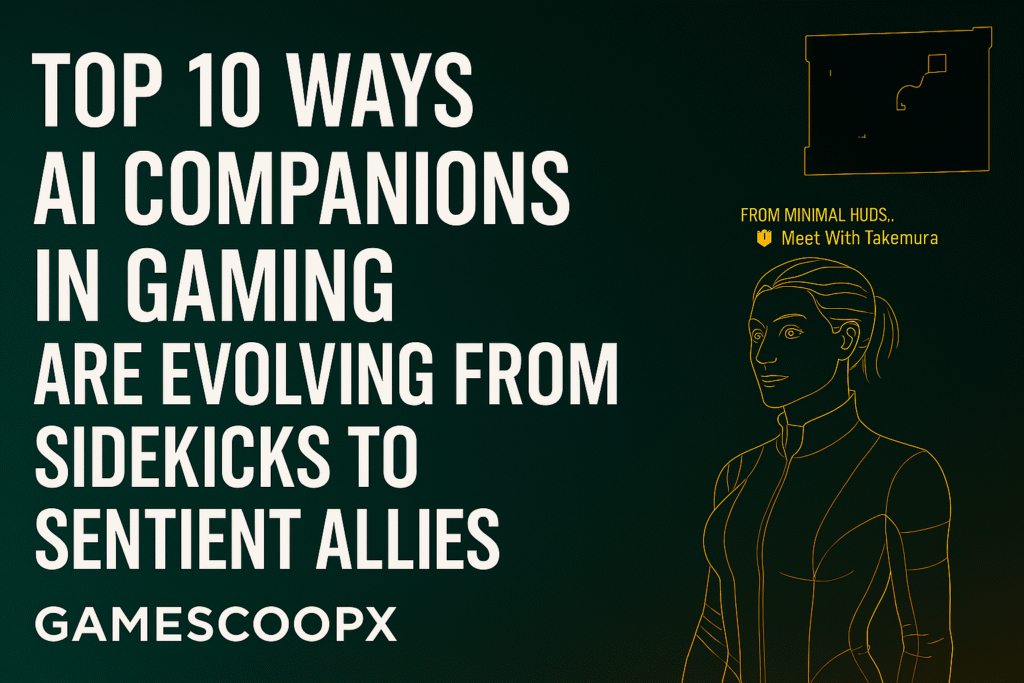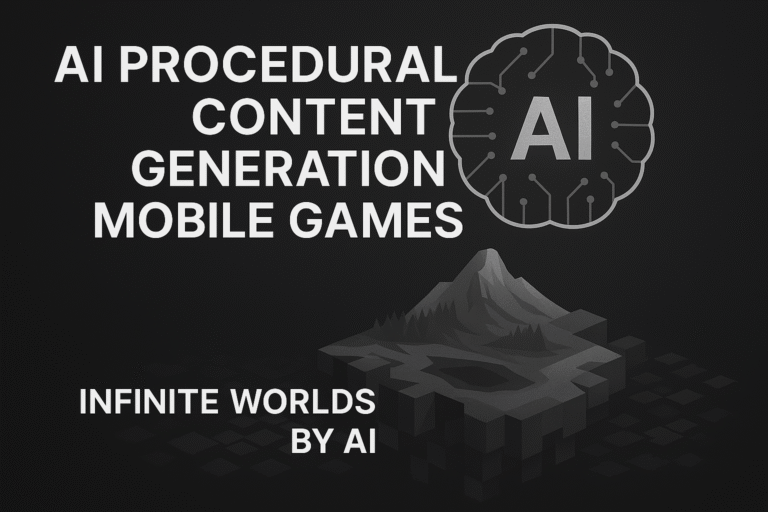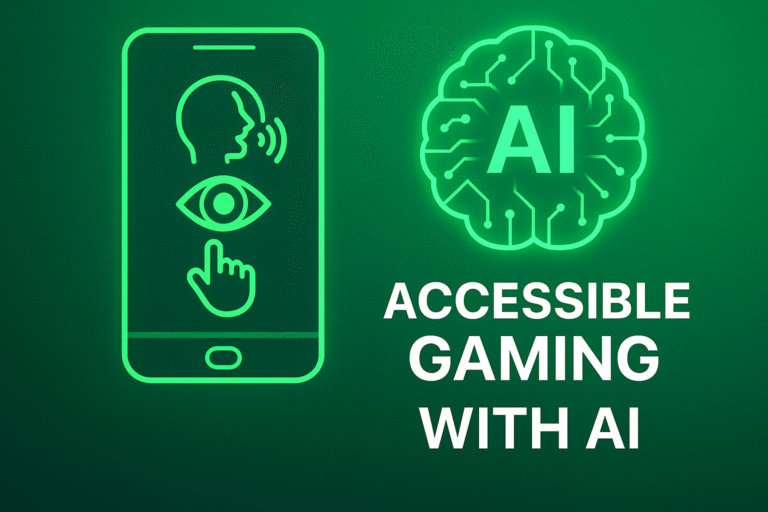
Explore the journey of AI companions in gaming—from loyal sidekicks to emotionally aware allies shaping the future of interactive gameplay.
Table of Contents
- What Are AI Companions in Gaming?
- The Evolution: From Scripted to Smart
- Emotional Bonds & Narrative Depth
- Gameplay Support & Adaptive Behavior
- SLMs & Real-Time Dialogue
- Cultural Adaptation for Indian Gamers
- Ethical Questions in AI Design
- AI in Indie vs AAA Titles
- External Tools & Engines Powering AI Companions
- Conclusion – The Future of Sentient Sidekicks
1. What Are AI Companions in Gaming?
AI companions in gaming are non-player characters (NPCs) powered by artificial intelligence that assist, interact, and evolve alongside the player. Unlike static sidekicks of the past, today’s AI companions are emotionally responsive, narratively integrated, and technically adaptive.
“AI companions are no longer just code—they’re characters.”
2. The Evolution: From Scripted to Smart
Early AI companions like Dogmeat in Fallout or Yoshi in Mario followed basic scripts. Today, characters like Atreus (God of War) and Elizabeth (BioShock Infinite) use behavior trees, machine learning, and NLP to respond dynamically.
🔹 Key Milestones:
✔ Scripted allies (Pac-Man ghosts)
✔ Context-aware companions (Alyx in Half-Life 2)
✔ The Emotionally intelligent AI Here (Trico in The Last Guardian)
3. Emotional Bonds & Narrative Depth
Games like The Last of Us and Mass Effect use AI companions to build emotional arcs. These characters react to player choices, express vulnerability, and grow over time.
🔹 Emotional Design Elements:
✔ Contextual dialogue
✔ Expressive animations
✔ Relationship tracking systems
✔ Story-driven consequences
“Players don’t just play with AI companions—they care about them.”
4. Gameplay Support & Adaptive Behavior
Modern AI companions enhance gameplay by offering combat support, puzzle-solving, and exploration guidance.
🔹 Examples:
✔ Atreus uses archery and summons
✔ Ellie scavenges and distracts enemies
✔ Elizabeth opens dimensional tears
These companions adapt to player behavior, making gameplay more strategic and immersive.
5. SLMs & Real-Time Dialogue
With Small Language Models (SLMs) and Natural Language Processing (NLP), AI companions can now understand and respond to player input in real time.
Imagine saying, “Find me a health potion,” and your AI buddy actually does it.
🔹 Benefits:
✔ Voice-based commands
✔ Dynamic conversations
✔ Personalized interactions
✔ Learning from player habits
Check out GameCloud’s deep dive on how SLMs are reshaping NPC behavior.
6. Cultural Adaptation for Indian Gamers
AI companions are becoming regionally aware, especially in India, where players value local language support and cultural relevance.
🔹 Regional Innovations:
✔ Companions that speak Hindi, Tamil, Marathi
✔ Reactions based on festivals or traditions
✔ Storylines inspired by Indian mythology
This makes AI companions feel more personal and relatable to Indian audiences.
7. Ethical Questions in AI Design
As The AI companions are becoming more lifelike, The ethical concerns arise:
🔹 Key Questions:
✔ Can AI companions manipulate player behavior?
✔ Do they offer unfair advantages in multiplayer?
✔ Should they simulate emotions or morality?
Developers must balance realism with responsibility, especially as AI becomes more autonomous.
8. AI in Indie vs AAA Titles
While AAA games lead in visual fidelity, indie games innovate with narrative depth and emotional nuance.
🔹 Indie Examples:
✔ Oxenfree II – AI-driven dialogue trees
✔ Stray – robot companion with emotional cues
✔ Heaven’s Vault – linguistic AI companions
Indie devs use limited resources creatively, focusing on player connection over spectacle.
9. External Tools & Engines Powering AI Companions
🔧 Tools & Engines:
✔ Unreal Engine 5 – Nanite & Lumen for real-time lighting
✔ Unity HDRP – High-fidelity rendering pipelines
✔ Inworld.ai – AI-powered NPC behavior
✔ Convai – Scene-aware, multilingual AI companions
✔ Substance Painter – Procedural texture layering
These tools enable realistic, responsive, and emotionally intelligent companions.
10. Conclusion – The Future of Sentient Sidekicks
AI companions in gaming are evolving from functional sidekicks to sentient allies—enhancing gameplay, deepening narratives, and redefining immersion.
As machine learning, NLP, and emotional AI advance, expect companions that learn, adapt, and grow with you—turning every game into a shared journey.
“In the future, your favorite co-op partner might not be human—it might be AI.”



